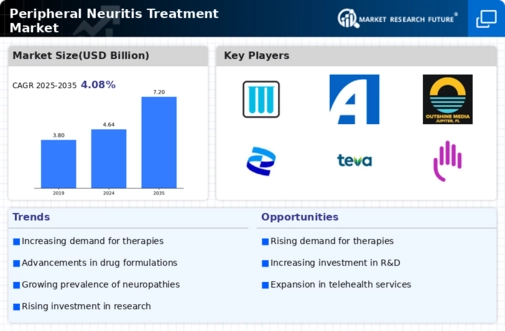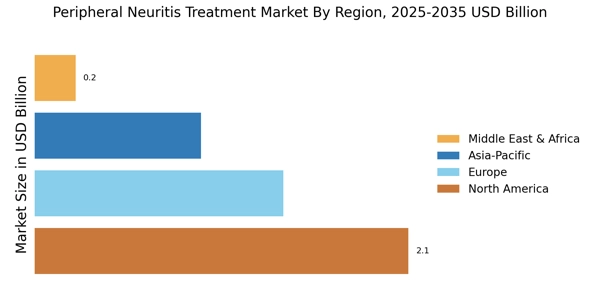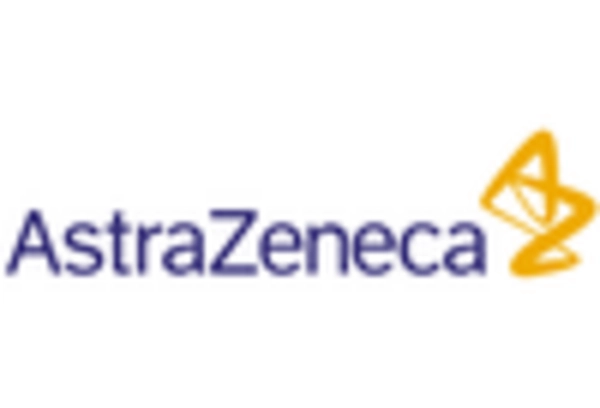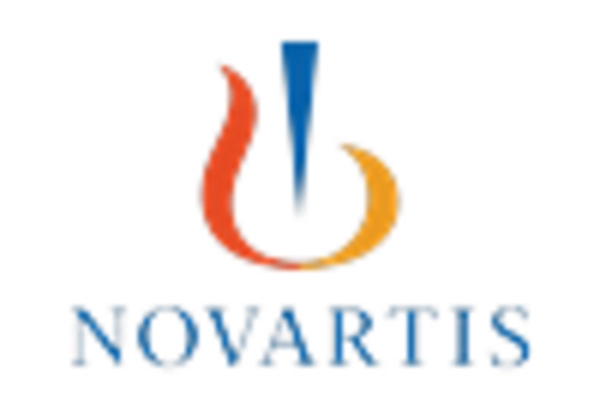Growing Awareness and Education
Increased awareness and education regarding peripheral neuritis are pivotal in shaping the Peripheral Neuritis Treatment Market. Healthcare professionals and patients are becoming more informed about the symptoms and potential treatments for peripheral neuropathy. Campaigns aimed at educating the public about the importance of early diagnosis and intervention are gaining traction. This heightened awareness is likely to lead to earlier treatment initiation, which can improve patient outcomes and reduce long-term healthcare costs. As more individuals seek medical advice for nerve-related symptoms, the demand for effective treatments within the Peripheral Neuritis Treatment Market is expected to rise, fostering a more proactive approach to managing this condition.
Integration of Technology in Treatment
The integration of technology into treatment protocols is emerging as a significant driver for the Peripheral Neuritis Treatment Market. Telemedicine and digital health solutions are facilitating remote consultations and monitoring, making it easier for patients to access care. This trend is particularly beneficial for those in rural or underserved areas, where access to specialized care may be limited. Additionally, wearable devices that monitor symptoms and treatment responses are becoming increasingly popular, allowing for personalized treatment adjustments. As technology continues to evolve, it is likely to enhance patient engagement and adherence to treatment plans, thereby positively impacting the Peripheral Neuritis Treatment Market.
Advancements in Pharmaceutical Research
Ongoing advancements in pharmaceutical research are significantly influencing the Peripheral Neuritis Treatment Market. The development of novel drugs and therapies, including targeted treatments and biologics, is enhancing the efficacy of peripheral neuritis management. Recent studies indicate that the market for neuropathic pain medications is projected to reach USD 5.5 billion by 2026, reflecting a robust growth trajectory. These innovations not only improve patient outcomes but also expand the range of available treatment options, catering to diverse patient needs. As pharmaceutical companies invest in research and development, the Peripheral Neuritis Treatment Market is likely to witness an influx of new products, thereby enhancing competition and driving further advancements.
Rising Incidence of Peripheral Neuropathy
The increasing prevalence of peripheral neuropathy is a primary driver for the Peripheral Neuritis Treatment Market. Factors such as diabetes, which affects approximately 463 million adults worldwide, contribute significantly to the rise in cases of peripheral neuritis. As the population ages, the incidence of conditions leading to nerve damage, such as autoimmune diseases and infections, is also on the rise. This growing patient population necessitates effective treatment options, thereby propelling the demand for therapies and medications within the Peripheral Neuritis Treatment Market. Furthermore, the economic burden associated with managing chronic conditions like diabetes underscores the need for innovative treatment solutions, which may further stimulate market growth.
Increasing Investment in Healthcare Infrastructure
The growing investment in healthcare infrastructure is a crucial factor influencing the Peripheral Neuritis Treatment Market. Governments and private entities are allocating resources to improve healthcare facilities and expand access to treatment options. This investment is particularly evident in developing regions, where healthcare systems are being strengthened to address the rising burden of chronic diseases, including peripheral neuropathy. Enhanced infrastructure facilitates better diagnosis, treatment, and management of peripheral neuritis, ultimately leading to improved patient outcomes. As healthcare systems evolve, the Peripheral Neuritis Treatment Market is poised for growth, driven by increased accessibility and availability of effective treatment options.


















Leave a Comment